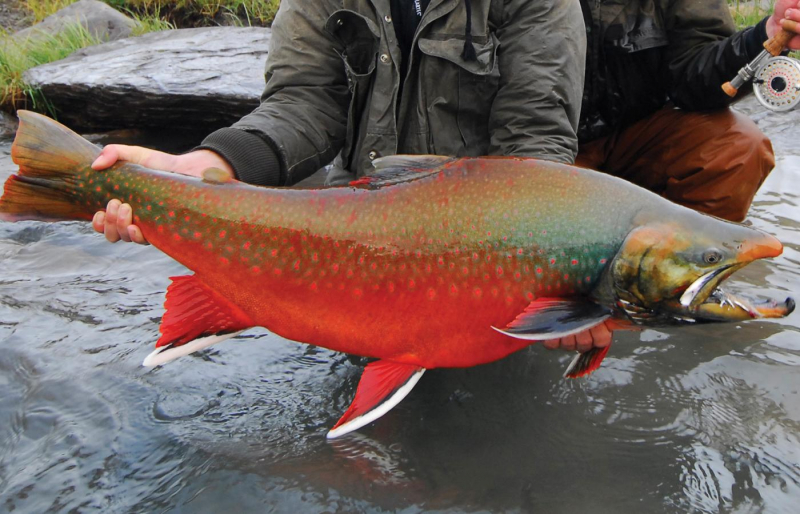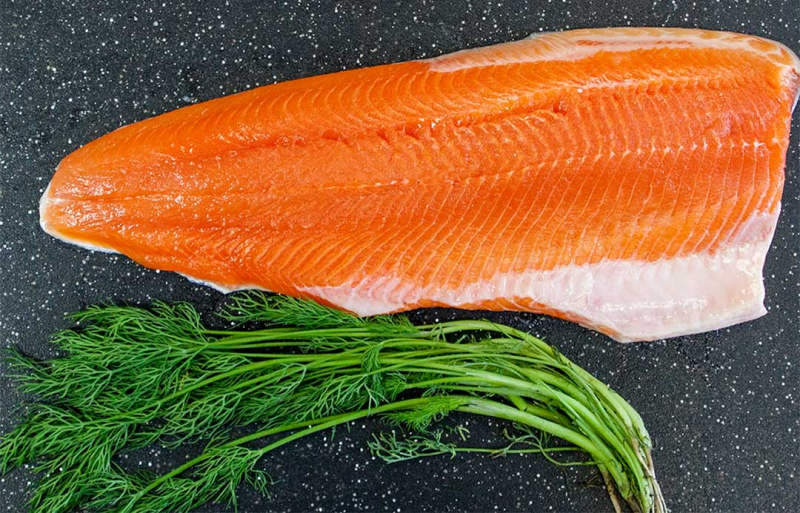Arctic Char

The Arctic char (Salvelinus alpinus) is a cold-water fish in the Salmonidae family that is native to alpine lakes and arctic and subarctic coastal seas. It is found in the circumpolar north. It spawns in freshwater, and populations can be lacustrine, riverine, or anadromous, returning from the ocean to spawn in their freshwater birth rivers. It is one of the rarest fish species in the United Kingdom and Ireland, found primarily in deep, cold glacial lakes, and is threatened by acidification.
The color of the flesh can range from bright red to pastel pink. Arctic char is high in omega-3 fatty acids, which are good for you. These fats are beneficial to heart health and brain development. Arctic char is also a high-protein food. Protein is required for the construction and maintenance of all bodily parts. The skin contains calcium, while the flesh is high in vitamin D. Calcium and vitamin D work together to maintain bones strong and healthy. When sunlight strikes your skin, your body may produce vitamin D; but, in the winter, when sunlight is scarce, it is critical to consume foods that contain this vitamin, such as arctic char.
Arctic char has a similar flavor and appearance to salmon, making it an excellent substitute if you can't locate wild-caught salmon in your area. Unlike many salmon, arctic char is farmed in a safe and healthy manner that prevents illness in the fish. There is no need to be concerned about environmental issues with these fish because they are grown sustainably and without harm to the fish.
















